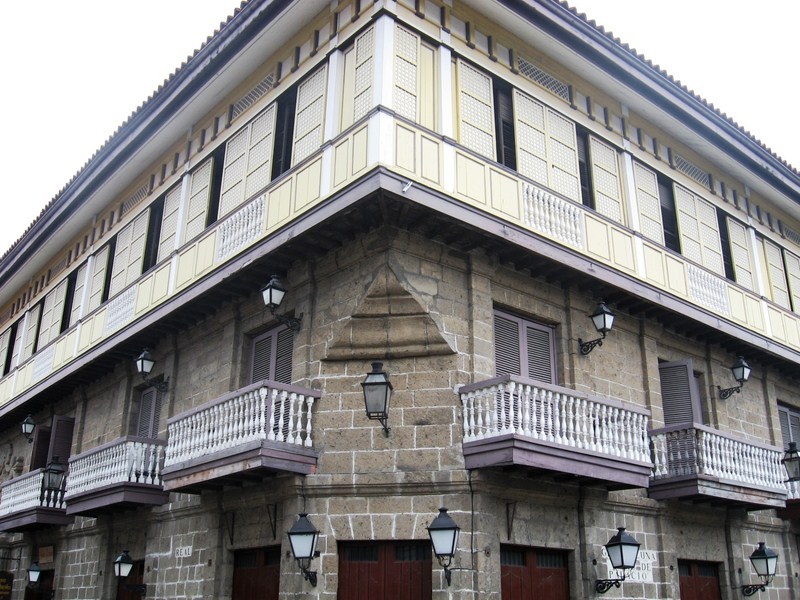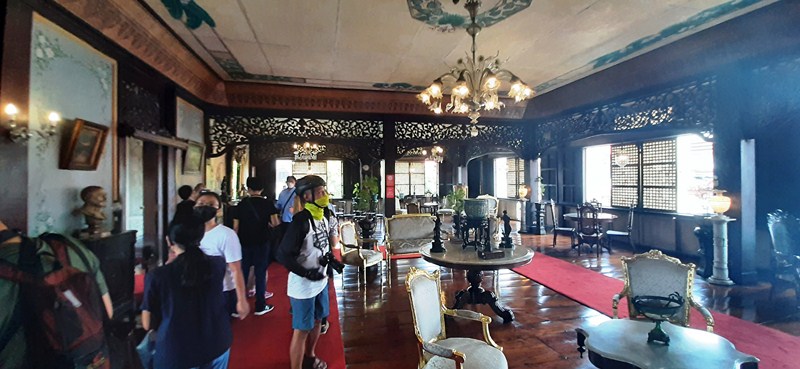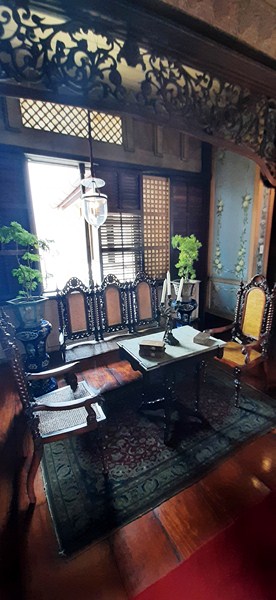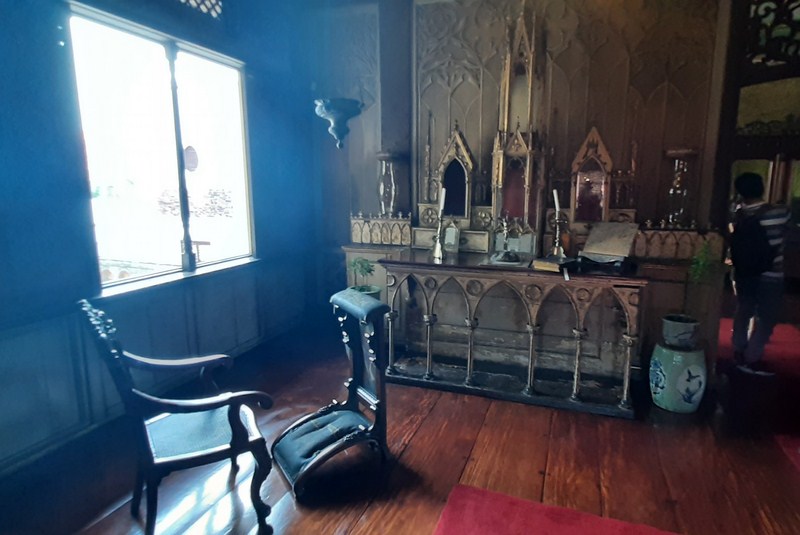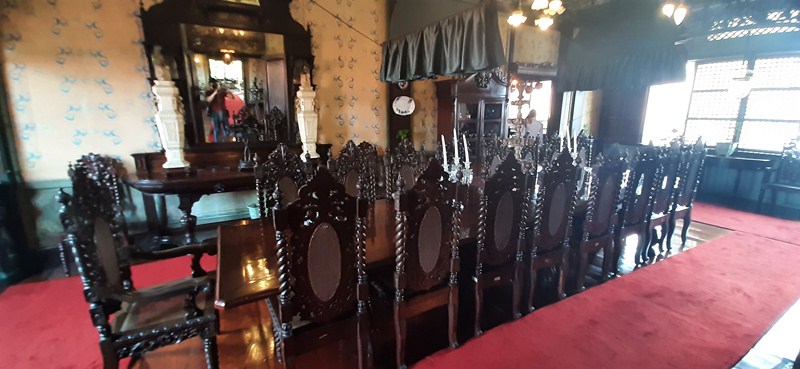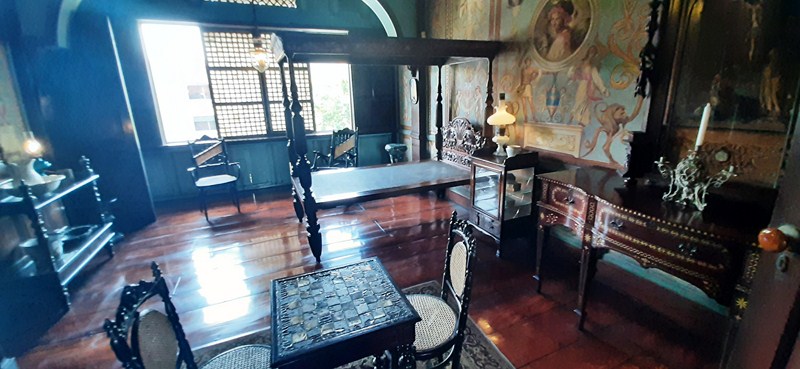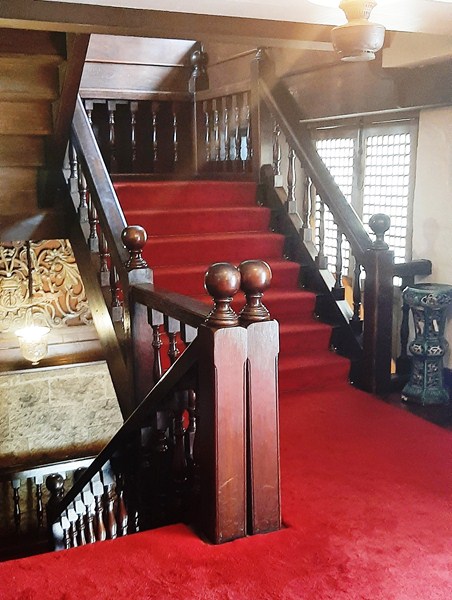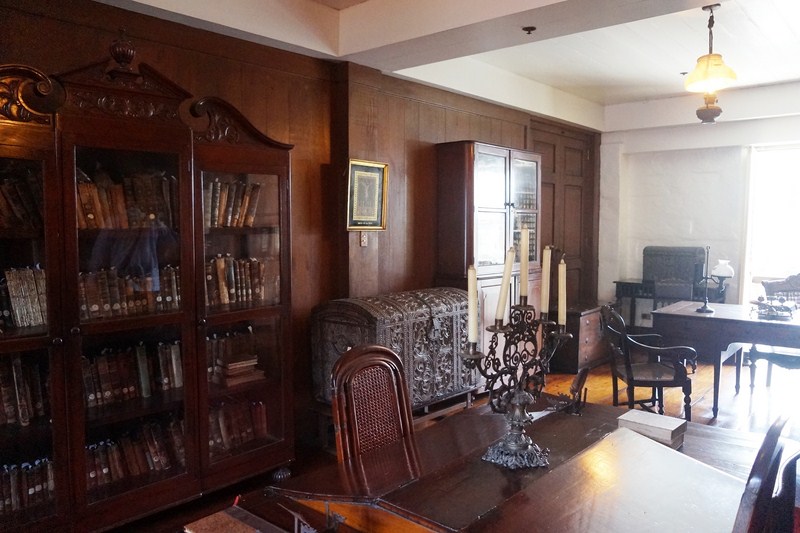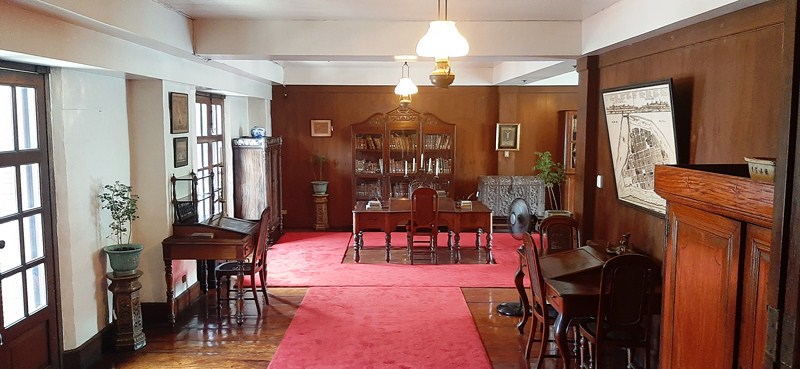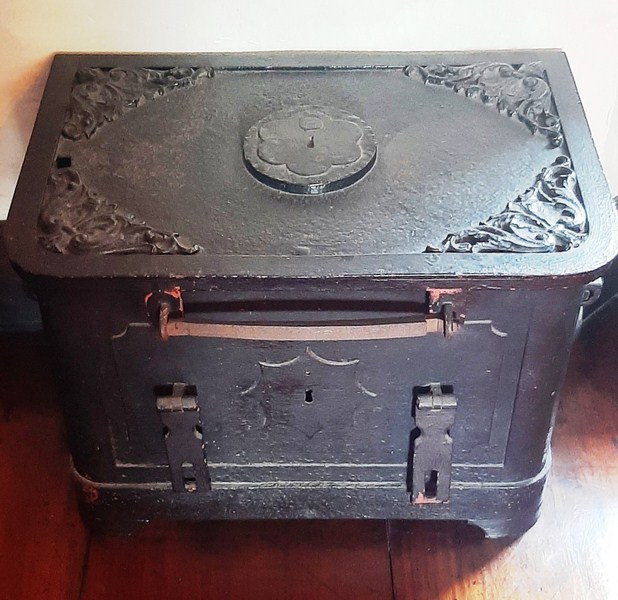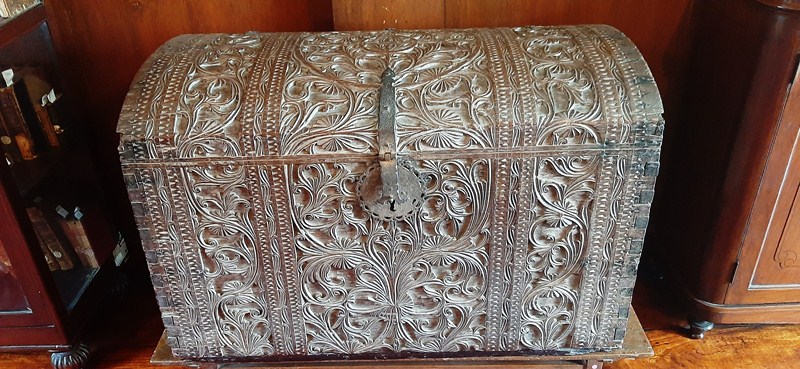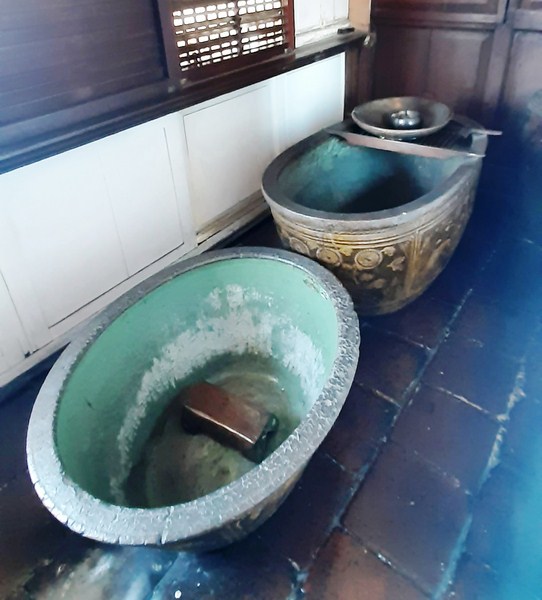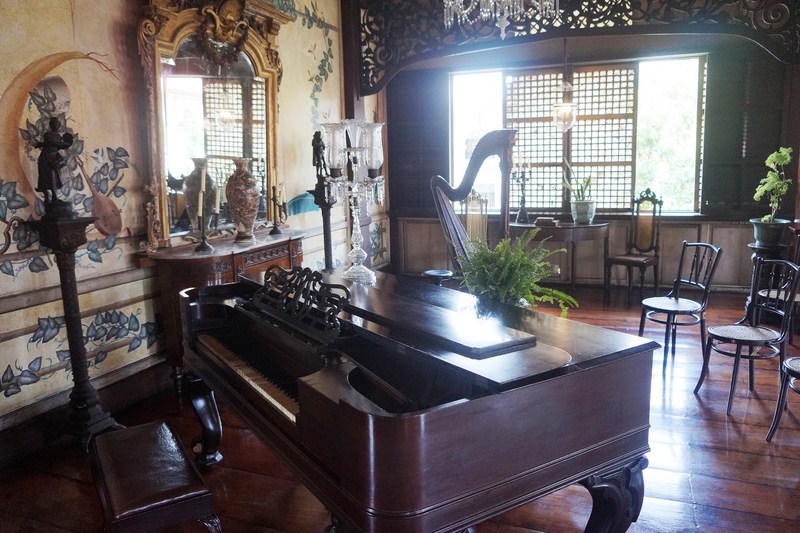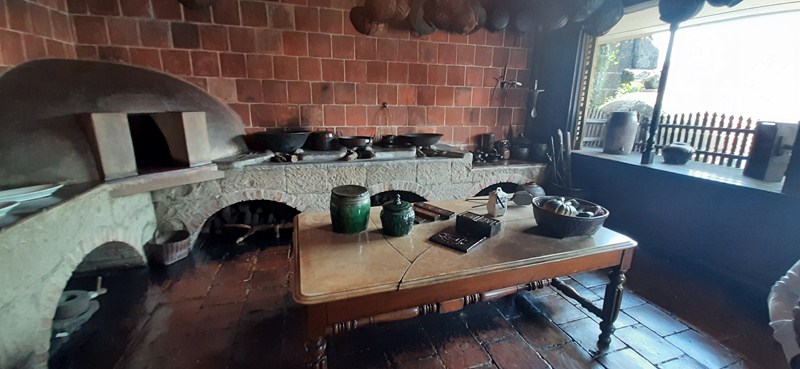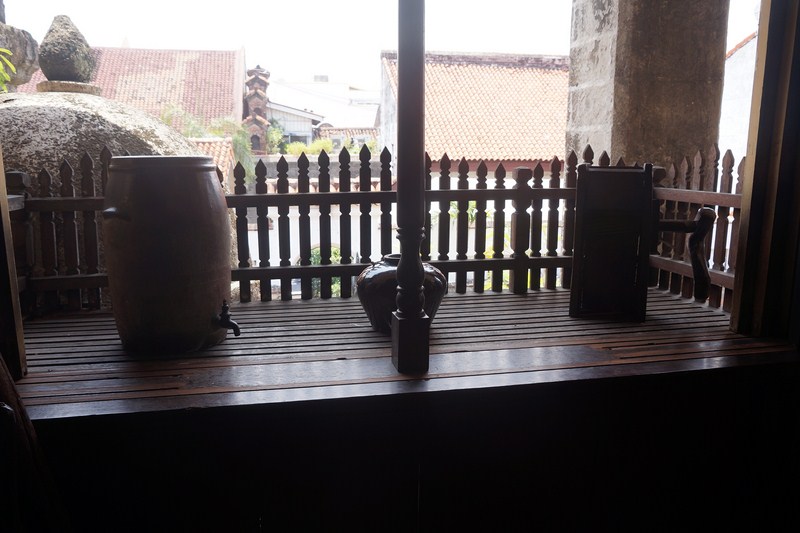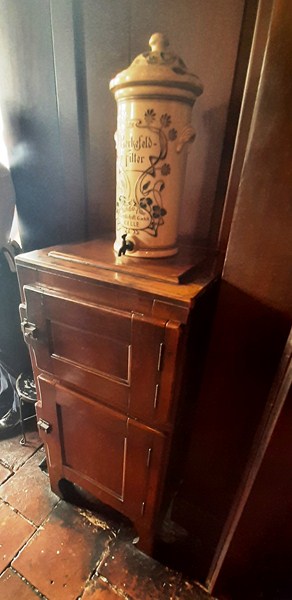Our 9 – 11 AM Intramuros Mini Walk, hosted by Renacimiento Manila, was capped by our tour of the 3-storey, grand and imposing Casa Manila, a museum depicting colonial lifestyle during Spanish colonization of the Philippines, located across historic San Agustin Church and bounded by Calle Real, General Luna, Cabildo and Urdaneta streets.
Check out “”San Agustin Church” and “Casa Manila (2008)”
I have visited this museum before but only got to see its façade of balconies, overhanging wooden gallery and its beautiful inner courtyard paved with piedra china with a decorative fountain that forms its centerpiece. This would be our first time to explore its exhibits which chronicle the social history of Manila during the Spanish Colonial era.
Decorated and furnished in authentic period style, it is typical of the homes of affluent Filipino families, offering a fascinating glimpse of a bygone era. Built in 1981, this museum is a faithful, beautifully-done reproduction of a typical, lavishly appointed, ca. 1850s Spanish bahay na bato (stone-and-wood) residence of Binondo merchant Don Severino Mendoza.
This house once stood along Calle de Jaboneros in San Nicolas, Binondo, one of the grand houses (the other two are the ca. 1650 Los Hidalgos and ca. 1890 Cuyugan Mansion) in Barrio San Luis (one of the four original villages of Intramuros ).
The museum, designed by Arch. J. Ramon L. Faustmann, is arranged over three floors. Though the house is just a reproduction, its exhibits aren’t. Its interiors, designed by Martin I. Tinio, Jr., displays finely-crafted, antique Philippine, Chinese and European furniture and furnishings; antique 17th to the early 20th century jewelry, and other items from the Intramuros Administration’s collection, offering an intriguing glimpse of 19th-century domestic life in Manila.
At the entrance is a zaguan (from the Arabic word meaning “corridor”) where the carruajes (carriages) and karitelas entered and deposited passengers by the stairs and were parked.
The flight of stairs leads to the middle floor which contains the two adjoining bedrooms (where immediate family member took siestas or naps as the rooms were relatively cooler in the afternoon) and the office-library.
Business is usually conducted at entre suelo or mezzanine (also where the bachelor of the house usually stays).
Furnishings include a caja de hiero (safe) and a baul (family treasure chest) that safely housed gold and silver coins and other valuables.
We also saw a special, period-style double latrine designed for use by two people at the same time. One interesting feature of this period of architecture is the lack of hinges on any of the doors as was done during that era.
The principal living area, occupying the topmost floor, was reached via a grand staircase. Here we admired antique furniture from China and Europe, as well as items made by local artisans that show the luxury of the era.
Don’t miss the impressive grandfather clock, as well as artworks, Persian rugs, Chinese ceramics, silverware, crystal chandeliers, a 4-poster ebony bed, religious images, antique grand piano (made in Boston in the 1850s), an old organ and harp, high marble top tables, pedestals holding European sculptures and other fine decorative objects which a wealthy family would have enjoyed accumulating.
Our tour ended at the kitchen where we imagined hard-working domestic staff carrying the heavy pots and pans back and forth in the intense heat from the charcoal oven as the family waited in anticipation of a delicious feast around the 18-seater dining room table, cooled by the punkah, a ceiling fan operated manually for the comfort of themselves and their guests.
In the kitchen, we also noticed a nevera (ice box), a bangerra (dish rack) and a rainwater cistern which provided running water to the household. After we have thoroughly explored the kitchen, we exited the museum via an external staircase to the courtyard.
Casa Manila: Plaza San Luis Complex, Gen. Luna cor. Real St., Intramuros, Manila 1002. Tel: (632) 527-4084. Open Saturdays to Sundays, 9 AM to 5 PM. Admission: Php50 for children, students with valid ID and faculty members; and PhP75 for adults.

